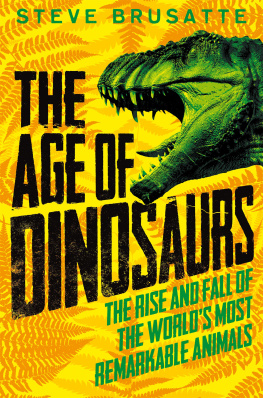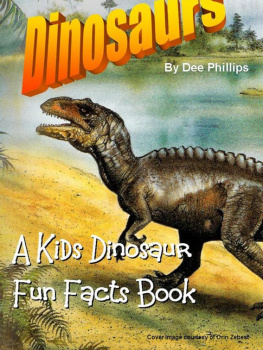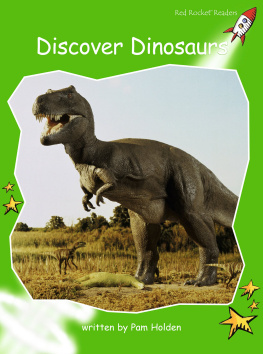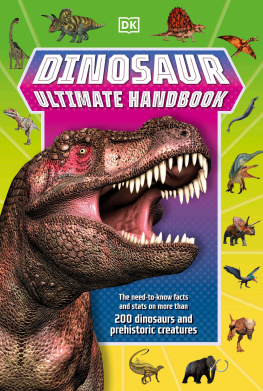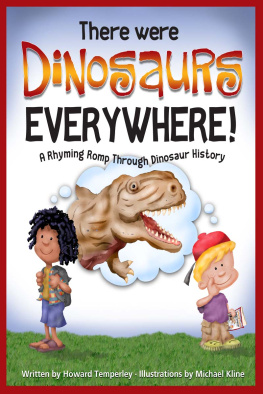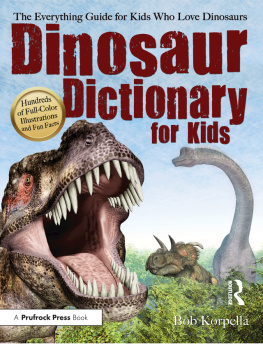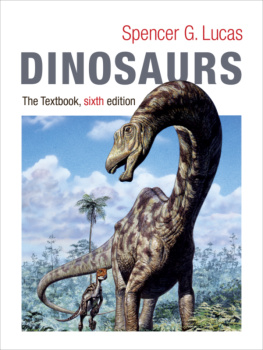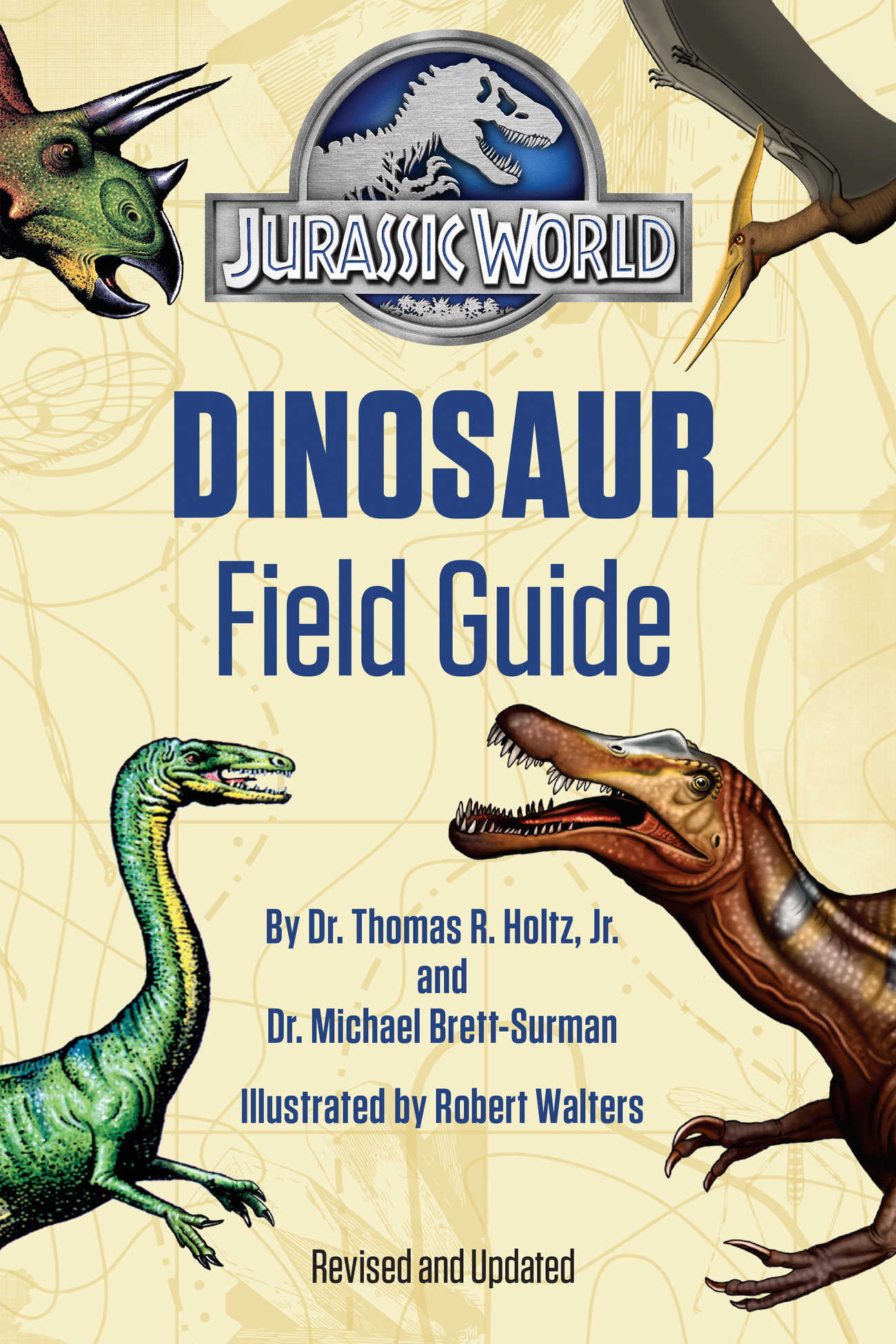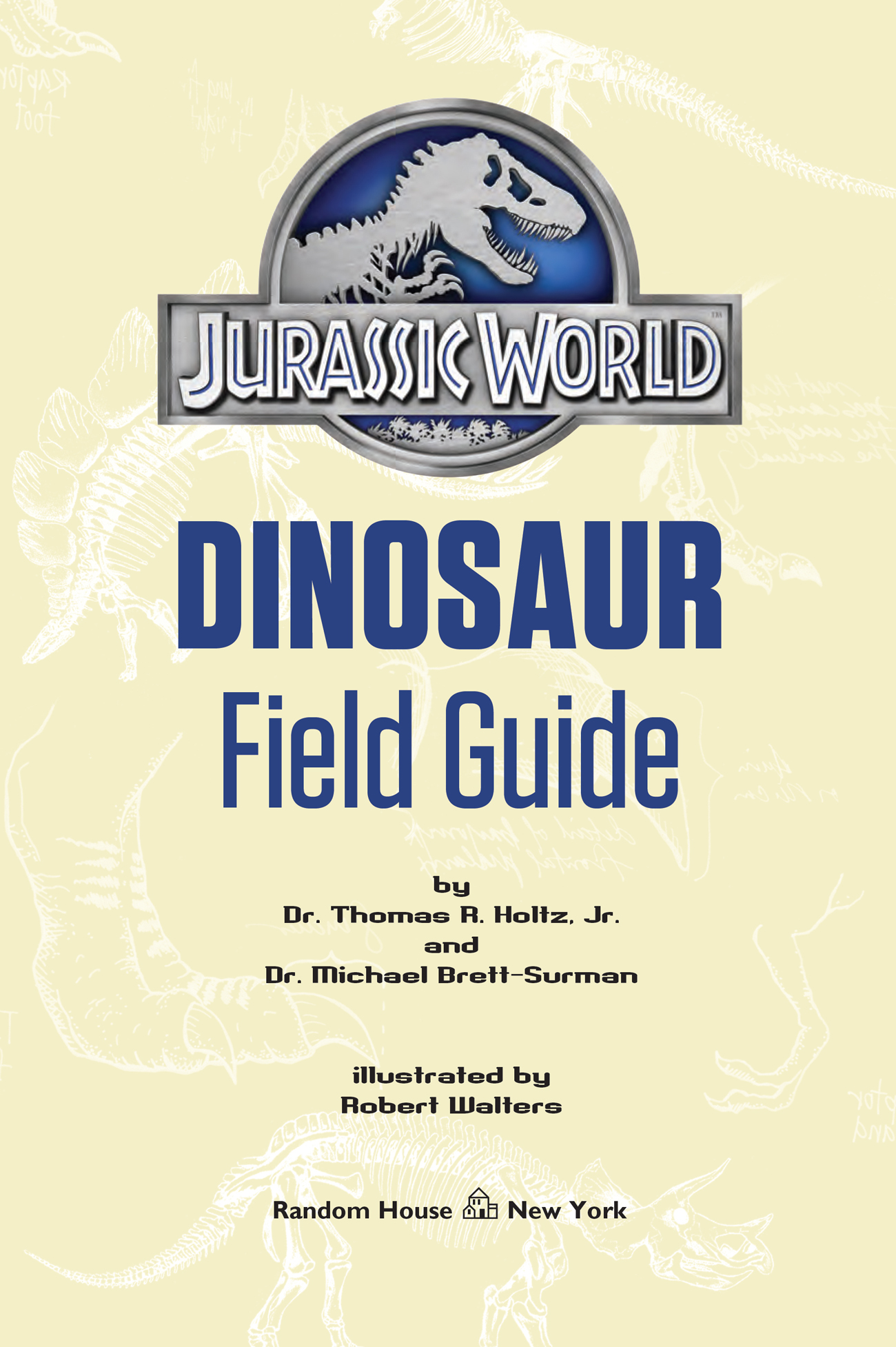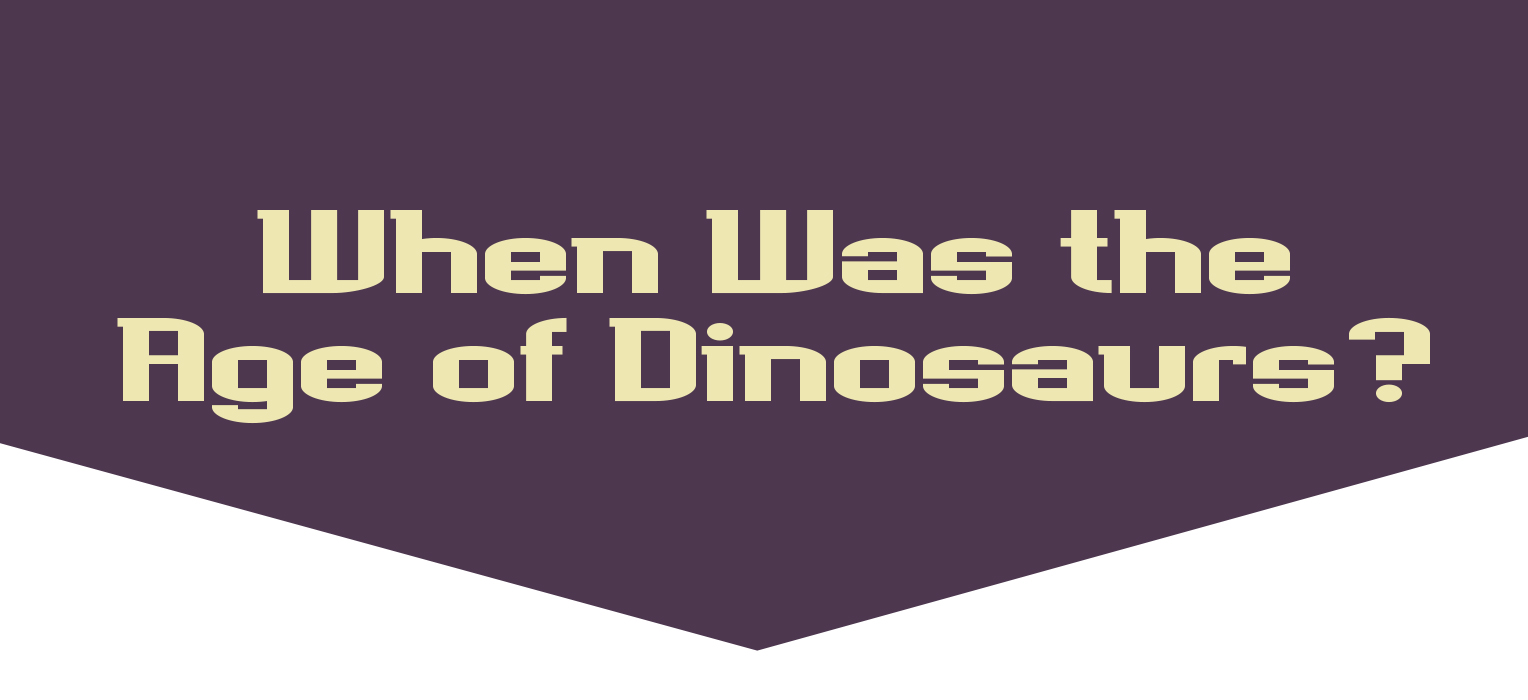Contents
A Note to Parents: This book is appropriate for ages 8 and up.
Jurassic World is rated PG-13.
Consult www.filmratings.com for further information.
Text copyright 2015 by Universal Studios Publishing Rights, a division of Universal Studios Licensing, Inc.
New and revised text copyright 2015 by Universal Studios Licensing, LLC.
Jurassic World is a trademark and copyright of Universal Studios and Amblin Entertainment, Inc.
Cover and interior art copyright 2015 by Robert Walters.
Jurassic World style guide images 2015 Universal Studios Publishing Rights, a division of Universal Studios Licensing, Inc.
Photographs on by Michael Brett-Surman.
All rights reserved. Published in the United States by Random House Childrens Books, a division of Penguin Random House LLC, 1745 Broadway, New York, NY 10019, and in Canada by Random House of Canada, a division of Penguin Random House Ltd., Toronto. Originally published by Random House Childrens Books, New York, in 2001.
Random House and the colophon are registered trademarks of Penguin Random House LLC.
Visit us on the Web! randomhousekids.com
Educators and librarians, for a variety of teaching tools, visit us at RHTeachersLibrarians.com
The Library of Congress has cataloged an earlier edition of this work as follows:
Holtz, Thomas R. Jurassic Park Institute dinosaur field guide / by Thomas R. Holtz, Jr. and Michael Brett-Surman ; illustrated by Robert Walters ; with photographs from the Jurassic Park films.
p. cm.
1. DinosaursEncyclopedias, Juvenile. 2. Jurassic Park (Motion Picture)Encyclopedias, Juvenile. [1.Dinosaurs.]
I. Title: Dinosaur field guide. II. Brett-Surman, M. K. III. Walters, Robert, ill. IV. Title. QE861 .3 .H65
2001 567.9dc21 2001019536
ISBN978-0-553-53685-0 (trade) eBook ISBN978-0-553-53686-7
Random House Childrens Books supports the First Amendment and celebrates the right to read.
v4.1
a


WHY ARE DINOSAURS SO POPULAR?
Hollywood has been featuring dinosaur-inspired creatures in movies for years, from the many versions of Sir Arthur Conan Doyles The Lost World to The Beast from 20,000 Fathoms , Godzilla , and Jurassic World. What could be more exciting than seeing such amazing creatures on the big screen? Yet Hollywood is not the only reason that dinosaurs are so popular.
The award-winning book The Complete Dinosaur suggests dinosaurs are popular because they represent adventure, power, time travel, science, mystery, [and] lost worlds. But what truly sets dinosaurs apart from other popular movie creatures is that dinosaurs were REAL. They were not part of some backdrop; they actually ruled our world for more than 150 million yearsthats 75 times longer than our own human species! Even though many dinosaur movies are loaded with inaccuracies (they are, after all, not documentaries, but entertainment!), they often spark our desire to know more. And thats why weve written this book: to tell you more about these amazingly popular creatures.
There are now over 1,200 named species of Dinosauria, and the number grows by about 40 each year! So how did we narrow that 1,200 down to the entries in this book? We wanted to give you a sample from every dinosaur group, and to include several that are familiarsome that have been around since being discovered in the 1800s, some featured in the Jurassic Park movies, several that were named during our lifetime, and some brand-new ones.
Since the Dinosaur Renaissance began in 1975, the number of professional dinosaur paleontologists (people who work on dinosaurs full-time at the professional level) has risen from about 20 to over 200. This has led to an explosion of new explorations and discoveries. At one time, North America was the center for new finds. Now China and Argentina lead the world in finding and naming new dinosaur species. With about 40 new species named per year, scientists learn something new about dinosaurs literally each month. The field of vertebrate paleontology is one of the most interdisciplinary of the sciences. Each year it will see new growth, new students, and new adventures. Care to join us?
Finally, there is one dark side to the sometimes overpopularity of dinosaurs. They now have a commercial value that makes the unethical and illegal collecting of fossils financially rewarding in some cases. For every dinosaur fossil with scientific value that gets collected as a trophy, or winds up in a non-permanent collection, the whole world and all future citizens run the risk of losing the equivalent of a page of Shakespeare. In the words of fictional character Indiana Jones (regrettably an archaeologist not a paleontologist), It belongs in a museum.
Dr. Thomas R. Holtz, Jr.
Dr. Michael Brett-Surman
The Age of Dinosaurs began about 252 million years ago (mya), during a time known as the Mesozoic Era. Now, to us humans, who have only been around for about 1.5 million years, 252 million years may seem like a long time ago. But it really isnt that long when you consider it as a part of what scientists call Geologic Time, or the time measured from today back to the birth of Earthabout 4.5 billion years!
The first eight-ninths of Earths history, from 4.5 billion to 541 million years ago, is called Precambrian (pree-CAIM-bree-in) Time. The oldest fossils show up in the early Precambrian about 3.75 billion years ago. These earliest fossils were of bacteria, the simplest known living things. More complex fossils, including traces of worm-like animals, show up much later in Precambrian Time. Because early life did not have hard parts, the fossil record is very sparse in the Precambrian. However, at around 541 million years ago animals developed shells, bones, teeth, and other hard parts. From this time onward, fossils become common. Scientists refer to the time from 541 million years ago to today as the Phanerozoic (FAN-uh-ro-ZO-ick), or visible life, Eon. This eon is divided into three eras.



